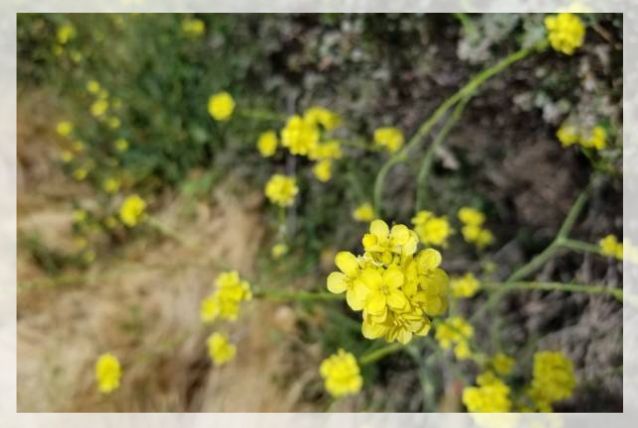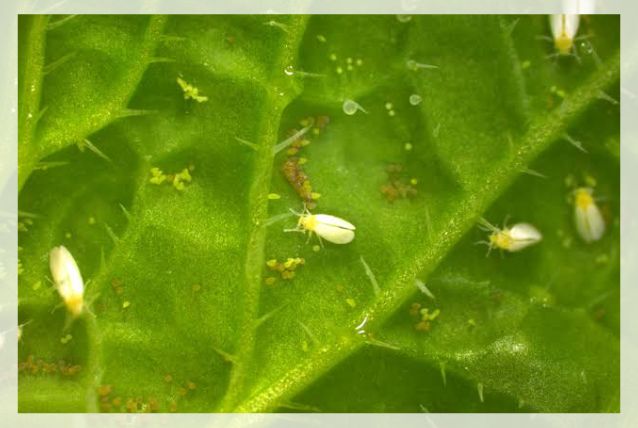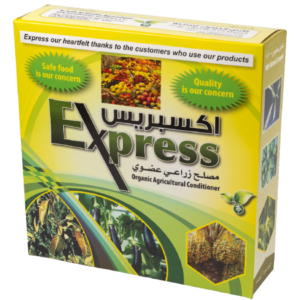Do you know that the Mustard Plant has a long history and has been used for thousands of years as a spice and a medicinal plant in the Middle ages?
Today it is becoming even more popular in gardens in your ho,e.
However, when you grow them in fields, they bloom yellow in autumn.
In most cases, it is white and brown mustard, Sinapis alba and Brassica juncea whereas black mustard Brassica nigra is rarely grown.
This is because many find it difficult to harvest mechanically.
It is important to note that both brown nor black mustard is not real mustard as neither of them belongs to the genus mustard, i.e. Sinapis.
You may find yellow-looking mustard to e just like that of rapeseed.
Both plants belong to the cruciferous family, i.e. Brassicacease, however, differ in flowering time, odor, and use.
Keep on reading to learn more about the black mustard plant.
Black Mustard Plant
Black mustard plant or Brassica nigra is one of the oldest and most useful herbs and spices.
Its young leaves are used as salad greens while you can use its mature leaves either by boiling or sautee them.
Moreover, its seeds are the source of the tart condiment that bears its name.
This stunning herb is native to North Africa and Eurasia and is loved worldwide.
Both commercial and residential growers plant them which leads to their introduction into local ecosystems.
The black mustard plant is easy to grow and tends to thrive in almost any soil condition.

It is important to note that this plant tends to reseed readily which results in the rapid spread and you can also allow the plant to naturalize almost anywhere.
Due to this, its spread is leading to label black mustard as invasive.
Adding to the problem is the allelopathic tendencies of this plant which inhibit the growth of native flora.
Though black mustard is beautiful, delicious, and nutritious, it is actually very good for your soil when you plant it in a controlled environment.
However, if you decide to add this plant to your garden, make sure to take the necessary steps to prevent the spread of the plant into the local ecosystem.
Quick Facts about Black Mustard Plant
Some quick facts about the black mustard plant are:
| Botanical Name | Brassica nigra |
| Common Name | Black mustard |
| Plant Type | Herb, Annual |
| Mature Size | 2 to 8 ft. tall |
| Sun Exposure | Full sun |
| Soil Type | Rich, Moist Loams, |
| Soil pH | Neutral |
| Bloom Time | March to June |
| Flower Color | Bright Yellow |
| Hardiness Zones | USDA zones 4-7 |
| Native Area | North Africa, Eurasia |
Black Mustard Plant Care
This plant is easy to grow and care for.
There is not much that can go wrong when growing this plant unless your water is too much or if the plant gets too hot.

When you plant them, there are a number of great uses for the seeds.
Make sure to collect them all and you can also stop its spread in the no-native area.
After all, native plants tend to be better for the environment and gardens.
Learn more about Japanese Garden: Essential Elements here.
Light and Soil Requirments
Black mustard tends to grow naturally in meadows and at the edges of the tilled land.
It tends to thrive best in full sun to grow and perform its best and does not tolerate shade well.
Although this plant can grow anywhere, they still prefer moist and loamy soil that is loose and well-draining.
Moreover, the pH range of the fall should be somewhere between 6 and 7.
An easy test of your soil can be taken to find the pH and you can watch how your plant is doing.
Water, Temperature, and Other Requirments
It is important to note that there is no set rule when you intend to water your plant.
Consider the water and keep your plant consistently moist without letting your plant sit in standing water and it will thrive.
However, if the soil is well-draining, over-watering should not become a problem.
Black mustard plants, like many leafy greens, are a cool crop.
It tends to thrive best before air temperature heats up and humidity increases.
In case the temperature is too warm, the plant goes to seed much more quickly with seeds that can ripe much faster and burst.
Moreover, this can lead to fields of black mustard in your yard and possibly your neighbor’s as well.
It is important to note that this plant grows best in USDA zones 4 to 7.
Depending on the richness of the soil, when adding fertilizer you may not need fertilizer, but you will need to till manure into the soil.
You will need to do this before planting to give your mustard extra flavor and give it a boost.
Furthermore, growing nitrogen fixers like beans and turnips next to this plant is a good practice as these use a lot of available nitrogen in the soil.
Types of Mustard Plants
There is a general difference between white, brown, and black mustard.
White Mustard, Sinapis alba.
This one is also known as yellow mustard due to its intense yellow flowers.
It forms about 4 to 8 seeds per pod while the seeds are white to light yellow with a mild flavor.
Brown Mustard, Brassica juncea
Also known as Indian or Chinese Mustard, it produces about 6 to 15 seeds per pod.
These are dark to light brown.
The use of mustard oil tends to be common in Asai, however, in a lot of areas, it has been replaced by rapeseed due to its low yield.
Brown mustard is often used in Dijon mustard.
Moreover, it has a sharp flavor. One of its varieties is ‘Rouge Métis’.
This variety has a slit, red purple leaf, making them decorative in a salad.
While another variety ‘Southern Giant Curled’, the curly mustard, forms large leaves that you can use in salads, on bread, or cook like spinach.
Black Mustard, Brassica nigra.
Rarely known as mustard greens, produces about 4 to 10 seeds per pod.
These seeds are dark brown or grey to black in color.
Moreover, its discriminating feature is the black stem which is often hairy at the bottom and tends to turn blue towards the top.
It is important to note black mustard is not grown commercially as tits pods are very close to the stem.
There they cannot be harvested well by machine. However, this type of mustard plant has a sharp flavor.
Propagating and Harvesting Black Mustard Plant
You can grow black mustard easily by sowing the seed directly into the soil.
The seeds are very small, so it often works well to scatter sow within a row.
Cover them with a light layer of soil and then thin plants will emerge once the seedling show.
You can harvest mustard as a cut and come again crop.

However, keep in mind that once the weather heats up, you will need to watch for your plants to bolt and go into seed production.
Harvest the seeds pot which you can add as a whole spice in food preparation.
Moreover, you can make sure your own mustard by grinding the seeds to powder and mixing it with vinegar and other ingredients.
Common Pests
It is important to note that the mustard plant tends to attract a number of pests like cauliflower, broccoli, and the like.
These plants grow more quickly than most other cole crops, thus they attract a lot of bugs that would also attack cabbage or other cruciferous, cool-weather vegetables.
The following are some of the pests that commonly attack mustard plants:
Aphids: These can do a lot of damage to your plant in large numbers.
Aphids suck sap from the plant and other vegetables, and can also spread diseases.
Moreover, they tend to reproduce quickly, so if you do not pay attention, they can cover your whole plant, often the undersides of the leaves.
Its heavy infestation can stunt growth and cause the leaves to wilt and shrivel.
If you spot them you can use a strong spray of water from the hose or wipe them off with a damp cotton swab.
While you can also use neem oil or insecticidal soap in case of heavy infestation.
Cabbage Loopers: These larvae can become one-and-a-half to tow inch caterpillars and can chew your mustard to pieces.
Cabbage loopers, Trichoplusia ni, will eat big holes in your plant, easily the broadleaf varieties like ” Red Giant”.
To prevent them, you can encourage natural predators like ladybugs that eat eggs and larvae.
Flea Beetles: These will gnaw small holes in the leaves of your plant.
Experts advise harvesting your plant before they get a stronghold on your plant.

However, in case of heavy infestation, you will need to use insecticide to keep them under control.
Otherwise, they can damage the crop and stunt its growth.
Snails and Slugs: These pests will eat on leaves and tender stalks of mustard.
Though they will leave some behind, you may not want to lose your plant once they serve itself.
the best defense against them is to favor gastropods. You can try handpicking them or disrupting or displacing them.
White Flies: These flies will leave a substance: honeydew on the undersides of the leaves that attract a fungal infection sooty mold.
They cause the leafy green to stop growing as sooty mold tends to prohibit photosynthesis.
If there is not much damage you can eradicate them with a modest application of insecticidal soap.
Disease to Watch for?
In most cases, you can avoid mustard green diseases with simple preventive measures that are stated above.
However, there are still certain diseases that can damage your plant during their short lives.
Make sure to look for signs of damage every few days, as the best remedy is to remove ravaged leaves, stems, and plants.
Some primary diseases to be aware of are:
- anthracnose
- bacterial leaf spot
- black rot
- damping off
- downy mildew
- white rust






Leave a Reply